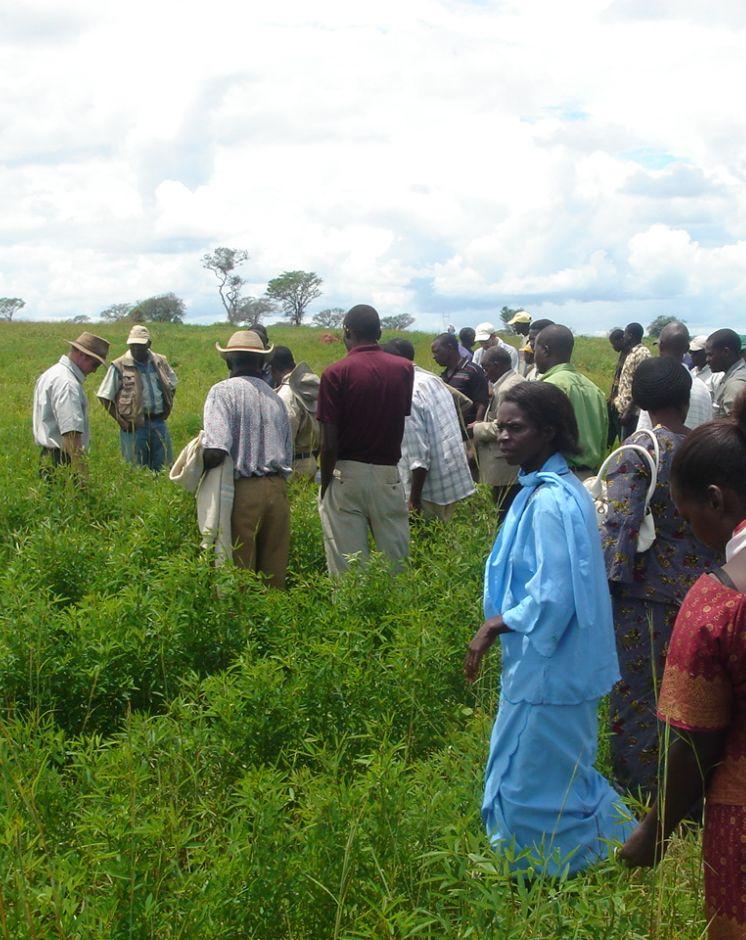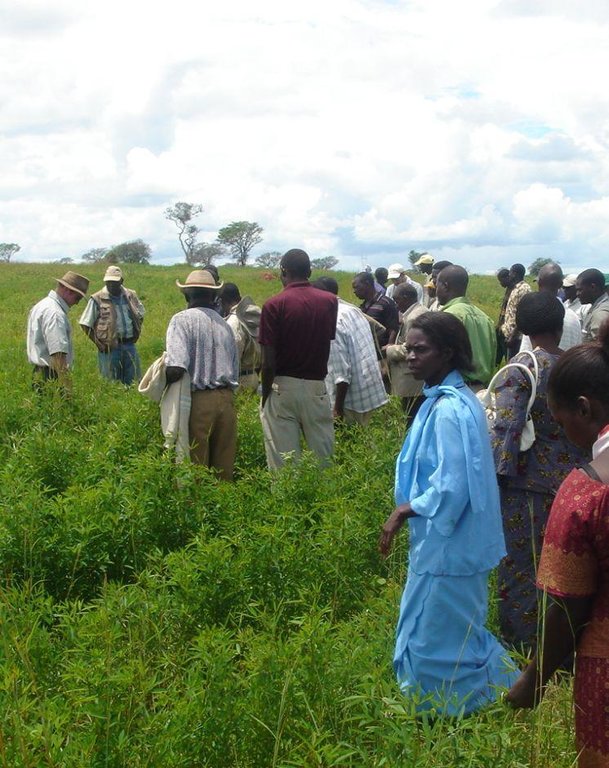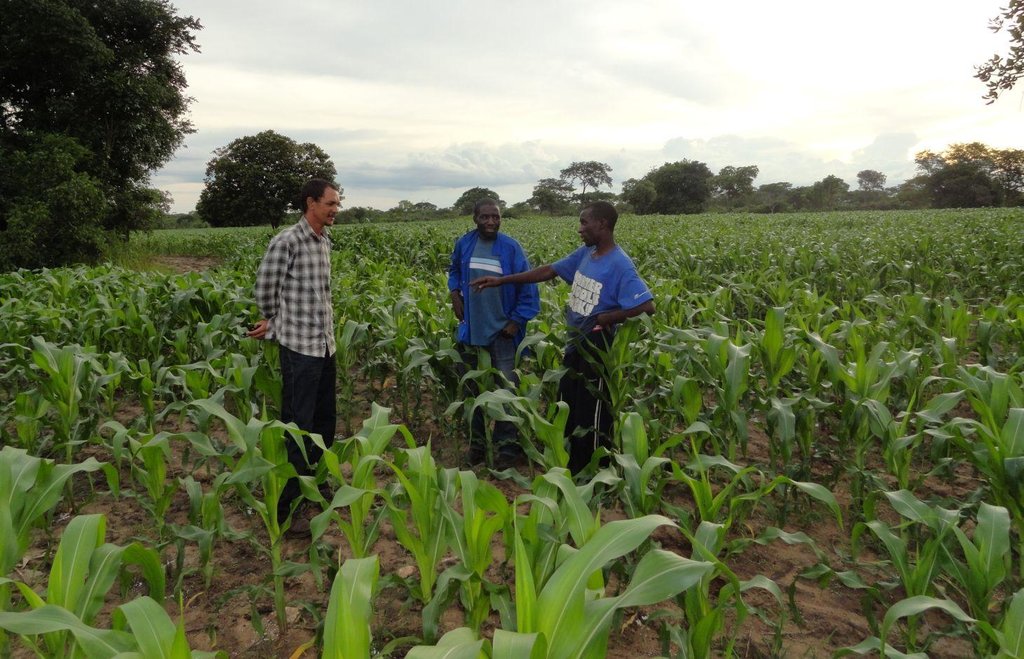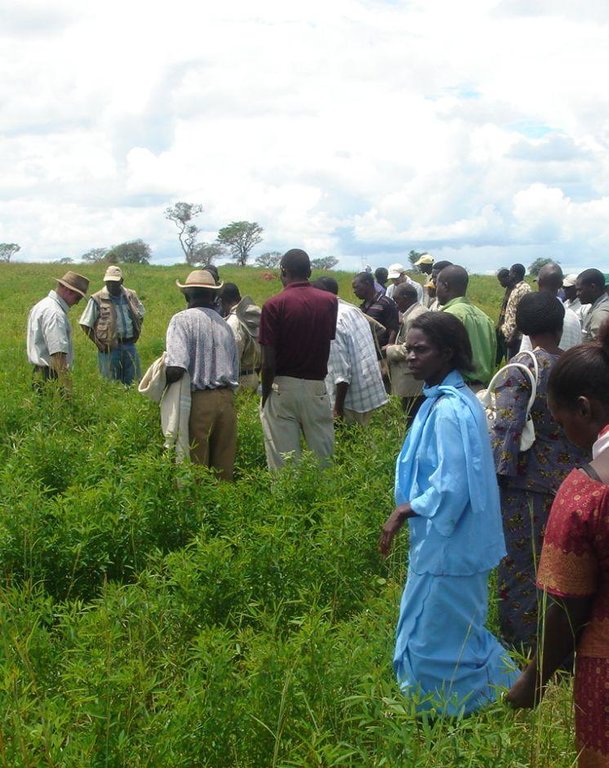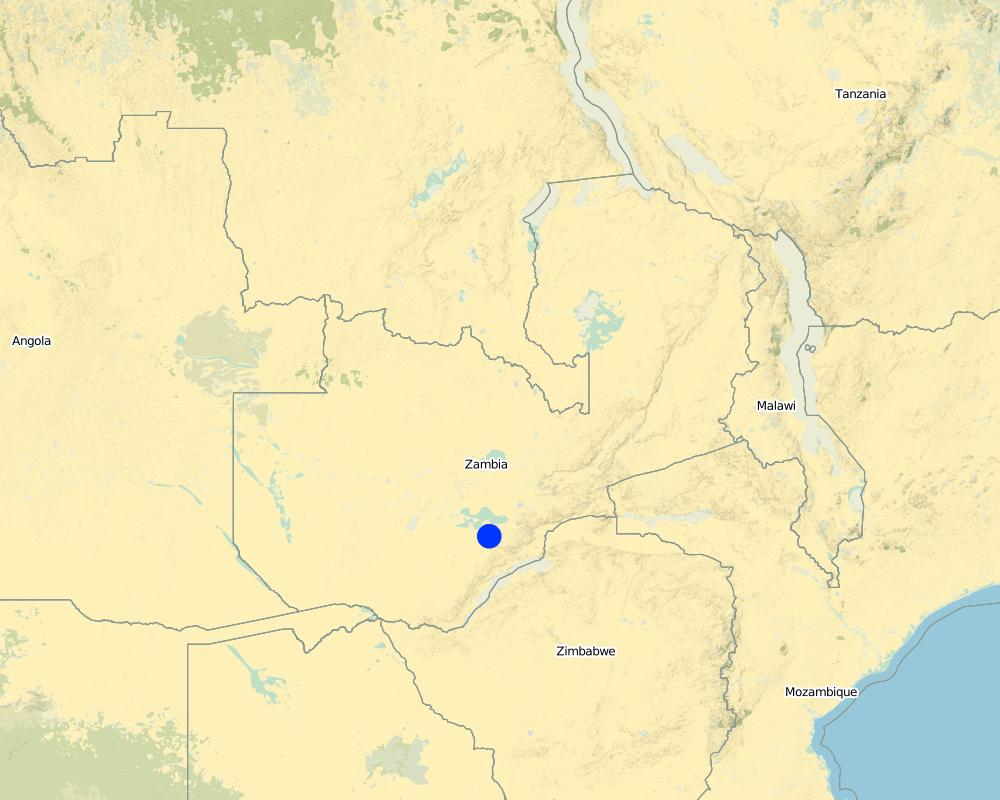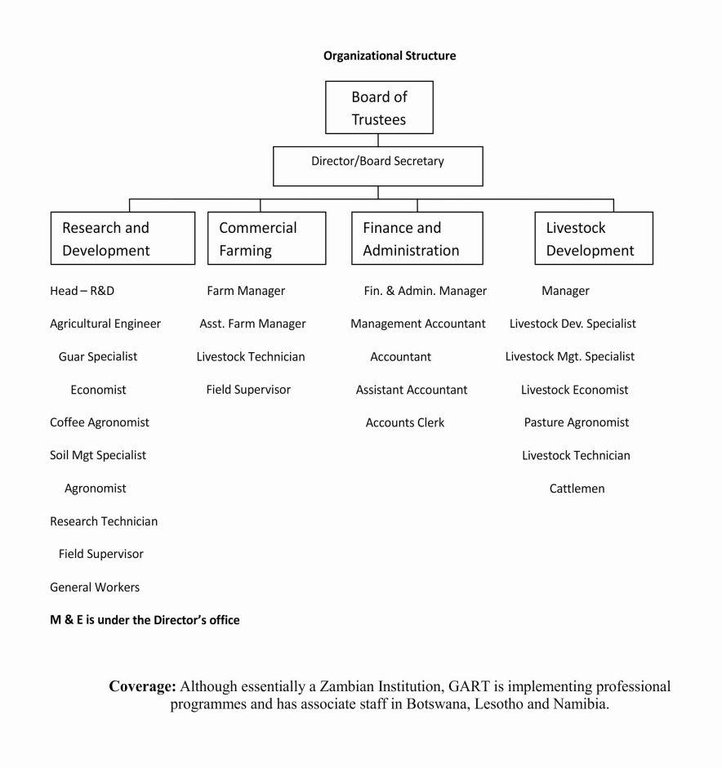Participatory Research and Development [Zambia]
- Creación:
- Actualización:
- Compilador: Arthur Chomba
- Editor: –
- Revisor: Fabian Ottiger
on-farm research
approaches_2464 - Zambia
Visualizar secciones
Expandir todo Colapsar todos1. Información general
1.2 Detalles de contacto de las personas de referencia e instituciones involucradas en la evaluación y la documentación del Enfoque
Especialista MST:
Ndandula Sharon
Gart
Zambia
Especialista MST:
Katoweji Alfred
GART
Zambia
Especialista MST:
Chingulu Sylvester
Ministry of Agriculture
Zambia
Especialista MST:
Wamunyima Silenga
+260 97 7490657
wamzysilenga@rocketmail.com
GART
Zambia
Nombre de la(s) institución(es) que facilitaron la documentación/ evaluación del Enfoque si fuera relevante)
Golden Valley agricultural research trust (Golden Valley agricultural research trust) - ZambiaNombre de la(s) institución(es) que facilitaron la documentación/ evaluación del Enfoque si fuera relevante)
Ministry of Agriculture of Zambia (MoA) - Zambia1.3 Condiciones referidas al uso de datos documentados mediante WOCAT
¿Cuándo se compilaron los datos (en el campo)?
16/01/2013
El compilador y la/s persona(s) de referencia claves aceptan las condiciones acerca del uso de los datos documentados mediante WOCAT :
Sí
1.4 Referencia/s al/los Cuestionario(s) de Tecnologías MST

Animal Draft Zero-Tillage [Zambia]
Animal draft zero-till involves the use of an animal drawn mechanical planter to plant directly in untilled soil to minimize soil disturbance and leave a cover of crop residues to conserve the soil and water.
- Compilador: Silenga Wamunyima

Strip Tillage Conservation Farming [Zambia]
Strip Tillage Conservation Farming is an animal draft reduced tillage method that involves loosening a strip of soil with a strip tillage tool so as to reduce soil disturbance and improve soil and water conservation.
- Compilador: Silenga Wamunyima
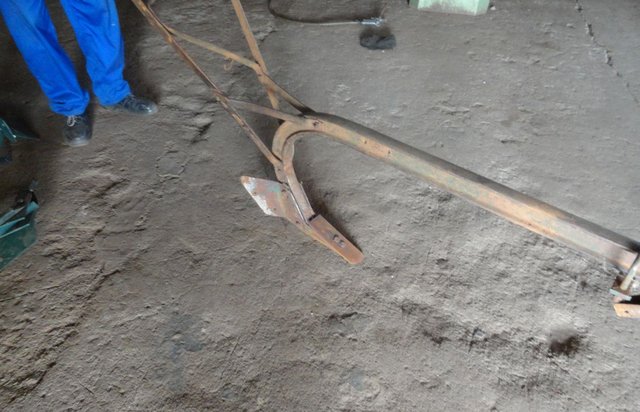
Conservation Tillage with Magoye Ripper [Zambia]
Conservation Tillage with the Magoye Ripper is an animal draft reduced tillage method that involves the use of the Magoye Ripper to loosen the soil by shattering with a tine instead of ploughing.
- Compilador: Silenga Wamunyima
2. Descripción del Enfoque MST
2.1 Breve descripción del Enfoque
This is a collaborative process between researchers and farmers for developing and adapting new technologies that focus on incorporating the perspectives and inputs from the farmers into the development process.
2.2 Descripción detallada del Enfoque MST
Descripción detallada del Enfoque MST:
Aims / objectives: (1)To stimulate active farmer participation in the technology development process so that local conditions and perspectives are integrated in the process. (2)Build the capacity of farmers to identify problems and contribute to selecting/improving technology options. (3) Raise farmers’ yields in a sustainable manner and ultimately contribute to increased net farm income.
Methods: A series of on-farm experiments are set up to test a range of technology options. These trials are implemented by the farmers so that vital feedback on which technology works and why it does so is collected. Suggestions for improvements are also collected, reviewed and incorporated into new designs or all together new technologies developed. The process is repeated until spontaneous adoption is evident before the technologies are promoted widely.
Stages of implementation: (1) Preparation of trial protocols for technologies to be tested (2) Identification of farmers and mobilization into farmer groups (3) Capacity building and increasing the knowledge base of farmers to effectively participate and contribute to development process. (4) Setting up of on-farm trials (5) Monitoring trials and collecting data/feedback from farmers (6) incorporation of feedback into technology development process and conducting on-station trials (7) technologies adapted or developed and introduced and the process is repeated.
Role of stakeholders: The approach was designed by national specialists where ‘best-bet’ technologies were pre-selected for testing. The role of GART was that of research and training of trainers. The supervision of the farmers was carried out by government extension workers who were supervised by the researchers and GART field technicians. The farmers implemented the approach and the decision on which technology to adopt was made by them. The land users also participated in evaluating the technologies and made suggestions on possible improvements. The decision on how best to consolidate these suggestions and incorporate them into the technologies was made by the specialists in consultation with the land users.
2.3 Fotos del Enfoque
2.5 País/ región/ lugares donde el Enfoque fue aplicado
País:
Zambia
Región/ Estado/ Provincia:
Zambia
Especifique más el lugar :
Mazabuka/Magoye
Map
×2.6 Fechas de inicio y conclusión del Enfoque
Indique año del inicio:
1995
2.7 Tipo de Enfoque
- proyecto/ basado en un programa
2.8 Propósitos/ objetivos principales del Enfoque
The Approach focused mainly on SLM with other activities (Increasing agricultural productivity, improving livelihoods )
(1)To stimulate active farmer participation in the technology development process so that local conditions and perspectives are integrated in the process. (2)Build the capacity of farmers to identify problems and contribute to selecting/improving technology options. (3) Raise farmers’ yields in a sustainable manner through technology innovation and ultimately contribute to increased net farm income.
The SLM Approach addressed the following problems: Unsustainable farming practices leading to environmental degradation and low agricultural productivity
2.9 Condiciones que facilitan o impiden la implementación de la/s Tecnología/s aplicadas bajo el Enfoque
normas y valores sociales/ culturales/ religiosos
- impiden
The participation of women not as much as that of men
Treatment through the SLM Approach: Women headed households were identified and targeting for inclusion in the project
disponibilidad/ acceso a recursos y servicios financieros
- impiden
The short cycle of projects and funding that made long-term planning difficult
Treatment through the SLM Approach: Collaborate with government structures and extension service to ensure sustainability of the project
entorno institucional
- impiden
Weak collaboration between organizations promoting conservation agriculture (CA) leading to mixed messages being delivered to farmers
Treatment through the SLM Approach: Formation of the Conservation Farming Association (CAA) to synchronise messages and avoid duplication of efforts
marco de trabajo legal (tenencia de tierra, derechos de uso de tierra y agua)
- impiden
Lack of secure land tenure leading to hesitancy to invest in long-term conservation efforts
Treatment through the SLM Approach: Emphasise the short-term benefits of conservation
The existing land ownership, land use rights / water rights moderately hindered the approach implementation Lack of secure land tenure discourages land user from seeking long-term conservation efforts
conocimiento de MST, acceso a apoyo técnico
- impiden
The failure of rural workshops to produce and supply the necessary equipment for the implementation of the approach
Treatment through the SLM Approach: Collaboration was initiated with mainstream equipment suppliers
otros
- impiden
Low returns from the sale of the staple crop (maize) and hence low returns to farming general
Treatment through the SLM Approach: Encourage crop livestock integration and promote crop diversification
3. Participación y roles de las partes interesadas involucradas
3.1 Partes interesadas involucradas en el Enfoque y sus roles
- usuarios locales de tierras/ comunidades locales
Community based organizations for HIV/AIDS affected people
Most of the households are male headed. of the 250 farmers registered in Magoye, only 22 were female headed.
- especialistas MST/consejeros agrícolas
Researchers and government extension
- investigadores
Researchers and government extension
- gobierno nacional (planificadores, autoridades)
Government extension implemented the approach after training from GART. Politicians were lobbied to mainstream CA in govt programmes
GART, the main implementing body is a quasi-government body
3.2 Involucramiento de los usuarios locales de tierras/ comunidades locales en las distintas fases del Enfoque
| Involucramiento de los usuarios locales de tierras/ comunidades locales | Especifique quién se involucró y describa las actividades | |
|---|---|---|
| iniciación/ motivación | interactivo | Approach inititated by specialists based on interactions with land-users from previous programmes |
| planificación | pasivo | Planning was done by specialists although farmers were informed and consulted at every stage |
| implementación | interactivo | Land users implemented the approach with the help of specialists |
| monitoreo y evaluación | pasivo | Monitoring/evaluation was done by the specialists together with the land users as well as external evaluators |
| Research | interactivo | Research was done by the specialists together with the land users |
3.3 Flujograma (si estuviera disponible)
Descripción:
Golden Valley Agricultural Research Trust (GART) is an autonomous and self-sustaining
Public Private Partnership organization in 1993 created by the Government of Zambia and the Zambia National Farmers Union GART is member of the Zambia National Farmers Union (ZNFU).
Autor:
Silenga Wamunyima (Mazabuka/Southern Province/Zambia)
3.4 La toma de decisiones en la selección de Tecnología(s) MST
Especifique quién decidió la selección de las Tecnología/ Tecnologías a implementarse:
- principalmente usuarios de tierras con el apoyo de especialistas MST
Explique:
The choice of which technology to test was made by the specialist but the choice of which technology to implement was made by the land users
Decisions on the method of implementing the SLM Technology were made by mainly by land users supported by SLM specialists
4. Apoyo técnico, fortalecimiento institucional y gestión del conocimiento
4.1 Construcción de capacidades / capacitación
¿Se proporcionó la capacitación a usuarios de tierras/ otras partes interesadas?
Sí
Especifique quién fue capacitado:
- usuarios de tierras
- personal de campo/ consejeros
Forma de capacitación:
- de agricultor a agricultor
- áreas de demostración
- reuniones públicas
Temas avanzados:
soil conservation and soil fertility improvement, how to use the conservation agricultural technologies, crop-livestock integration
4.2 Servicio de asesoría
¿Los usuarios de tierras tienen acceso a un servicio de asesoría?
Sí
Especifique si servicio proporcionado se realizó:
- en los campos de los usuarios de tierras
Describa/ comentarios:
Name of method used for advisory service: Training of Trainers; Key elements: trainig of goverment extension workers and NGOs promoting of conservation agriculture (CA), on-farm demonstrations, field days
Advisory service is inadequate to ensure the continuation of land conservation activities; There are too few extension workers and there aren’t sufficient training manuals
4.3 Fortalecimiento institucional (desarrollo institucional)
¿Se establecieron o fortalecieron instituciones mediante el Enfoque?
- sí, moderadamente
Especifique el nivel o los niveles en los que se fortalecieron o establecieron las instituciones:
- local
Especifique el tipo de apoyo:
- construcción de capacidades/ entrenamiento
- equipo
Proporcione detalles adicionales:
Capacity building of local cooperatives and farmer associations, training of trainers and practical demonstrations
4.4 Monitoreo y evaluación
¿El monitoreo y la evaluación forman parte del Enfoque?
Sí
Comentarios:
bio-physical aspects were regular monitored by project staff, land users through observations; indicators: Soil properties, moisture conservation
bio-physical aspects were ad hoc monitored by project staff through measurements; indicators: soil miosture, soil fertility
technical aspects were regular monitored by project staff through observations; indicators: Yield, production area, labour, timeliness
technical aspects were None monitored by project staff through measurements; indicators: equipment breakdowns
socio-cultural aspects were None monitored by project staff through observations; indicators: Gender, mindset, status
economic / production aspects were None monitored through observations; indicators: Yields, labour inputs, costs, income, adoption
no. of land users involved aspects were monitored through observations
There were several changes in the Approach as a result of monitoring and evaluation: There was more emphasis on on-farm trials as the project went on with more training on weeding techniques and crop-livestock integration
There were several changes in the Technology as a result of monitoring and evaluation: The Magoye Ripper (T_ZAM003en) was modified to penetrate deeper and an altogether new technology called the Magoye Planter (Strip Tillage T_ZAM002en) was developed to overcome some of the constraints of the Magoye Ripper.
4.5 Investigación
¿La investigación formó parte del Enfoque?
Sí
Especifique los temas:
- tecnología
Proporcione detalles adicionales e indique quién hizo la investigación:
Research by GART focused on equipment development and adaptation of soil improvement technologies to make Conservation Agriculture (CA) a viable option for animal draft farmers
Research was carried out both on station and on-farm
5. Financiamiento y apoyo material externo
5.1 Presupuesto anual para el componente MST del Enfoque
Si no se conoce el presupuesto anual preciso, indique el rango:
- 2,000-10,000
Comentarios (ej. fuentes principales de financiamiento/ donantes principales):
Approach costs were met by the following donors: local community / land user(s) (Land preparation by land user(s)): 100.0%
5.2 Apoyo financiero/material proporcionado a los usuarios de tierras
¿Los usuarios de tierras recibieron financiamiento/ apoyo material para implementar la Tecnología/ Tecnologías? :
Sí
Si respondió sí, especifique el tipo o los tipos de apoyo, condiciones y proveedor(es) :
Mostly contributions from EU supplemented by finances from commercial activities i.e. commercial crop production and contract research
5.3 Subsidios para insumos específicos (incluyendo mano de obra)
- equipo
| Especifique qué insumos se subsidiaron | En qué grado | Especifique los subsidios |
|---|---|---|
| herramientas | parcialmente financiado | |
Si la mano de obra de usuarios de tierras fue un insumo sustancial, ¿fue:
- voluntario?
Comentarios:
GART only provided technical support while the farmer provided all the inputs, labour
5.4 Crédito
¿Se proporcionó crédito bajo el Enfoque para actividades MST?
No
6. Análisis de impacto y comentarios de conclusión
6.1 Impactos del Enfoque
¿El Enfoque ayudó a los usuarios de tierras a implementar y mantener Tecnologías MST?
- No
- Sí, un poco
- Sí, moderadamente
- Sí, mucho
The farmers that adopted the Magoye Ripper were ploughing (pulverising) less thereby reducing erosion and loss of organic matter. However, some of the technologies have not been adopted on a wide enough scale to create an impact at community level. Even the farmers that did not adopt the technologies are now more aware of the need for soil conservation.
¿El Enfoque empoderó a grupos en desventaja social y económica?
- No
- Sí, un poco
- Sí, moderadamente
- Sí, mucho
HIV/AIDS affected families and female headed households were specifically targeted
¿El Enfoque mejoró cuestiones de tenencia de tierra/ derechos de usuarios que obstaculizaron la implementación de la Tecnologías MST?
- No
- Sí, un poco
- Sí, moderadamente
- Sí, mucho
Apart from lobbying policy makers, issues of land tenure were beyond the scope of the approach The problem is likely to be overcome in the near future. The problem has been acknowledged by politicians and addressed in the new draft constitution
Did other land users / projects adopt the Approach?
- No
- Sí, un poco
- Sí, moderadamente
- Sí, mucho
On-farm research has been adopted by the Conservation Farming Unit (CFU) who are the biggest player in promotion of Conservation Agriculture in Zambia. There are not many other research organizations in Zambia
Did the Approach lead to improved livelihoods / human well-being?
- No
- Sí, un poco
- Sí, moderadamente
- Sí, mucho
Increased income and improved food security, less labour constraints and more time for other economic activities
Did the Approach help to alleviate poverty?
- No
- Sí, un poco
- Sí, moderadamente
- Sí, mucho
Increased income and improved food security, less labour constraints and more time for other economic activities
6.2 Motivación principal del usuario de la tierra para implementar MST
- producción incrementada
- incremento de la renta(bilidad), proporción mejorada de costo-beneficio
- carga de trabajo reducida
- conciencia medioambiental
6.3 Sostenibilidad de las actividades del Enfoque
¿Pueden los usuarios de tierras sostener lo que se implementó mediante el Enfoque (sin apoyo externo)?
- sí
Si respondió que sí, describa cómo:
Adoption rates for Conservation Agriculture are still fairly low indicating that the practice is still fairly new and the technologies still need to be adapted and refined to suit local conditions. The farmers still need technical support until the bottlenecks with the practices are addressed and there is evident spontaneous adoption. This all depends on how well research and planners respond to the current challenges.
6.4 Fortalezas/ ventajas del Enfoque
| Fuerzas/ ventajas/ oportunidades desde la perspectiva del usuario de la tierra |
|---|
| Farmers well informed of current developments and technology advancements (How to sustain/ enhance this strength: Training farmers on current developments and technology advancements) |
| Fuerzas/ ventajas/ oportunidades desde la perspectiva del compilador o de otra persona de referencia clave |
|---|
| Farmers organizations strengthened (How to sustain/ enhance this strength: Capacity building) |
|
There is strong farmer involvement in technology adaptation (How to sustain/ enhance this strength: Increase the farmers knowledge base to ensure effective participation) |
6.5 Debilidades/ desventajas del Enfoque y formas de sobreponerse a ellos
| Debilidades/ desventajas/ riesgos desde la perspectiva del compilador o de otra persona de referencia clave | ¿Cómo sobreponerse a ellas? |
|---|---|
| Too little emphasis on knowledge transfer and too much on practical demonstrations and ‘how-to’ training. |
Focus more on understanding principles and technology selection |
7. Referencias y vínculos
7.1 Métodos/ fuentes de información
- visitas de campo, encuestas de campo
- entrevistas con usuarios de tierras
7.2 Referencias a publicaciones disponibles
Título, autor, año, ISBN:
Impact study on the acceptance of the Magoye Ripper, Piet Stevens, David Samazaka, Ab Wanders, Douglas Moono, 2002 Conservation farming in Zambia, Steven Haggblade, Gelson Tembo, October 2003 Social-economic analysis of conservation agriculture in southern Africa, FAO, 2011Conservation farming in Zambia, Conservation farming unit (CFU), 2011
¿Dónde se halla disponible? ¿Costo?
GART/free onlineINDABA Project, Michigan State University/free onlineFAO/free onlinecfu@zamnet.zm
Título, autor, año, ISBN:
Conservation farming in Zambia, Steven Haggblade, Gelson Tembo, October 2003
¿Dónde se halla disponible? ¿Costo?
INDABA Project, Michigan State University/free online
Título, autor, año, ISBN:
Social-economic analysis of conservation agriculture in southern Africa, FAO, 2011
¿Dónde se halla disponible? ¿Costo?
FAO/free online
Título, autor, año, ISBN:
Conservation farming in Zambia, Conservation farming unit (CFU), 2011
¿Dónde se halla disponible? ¿Costo?
cfu@zamnet.zm
Vínculos y módulos
Expandir todo Colapsar todosVínculos

Animal Draft Zero-Tillage [Zambia]
Animal draft zero-till involves the use of an animal drawn mechanical planter to plant directly in untilled soil to minimize soil disturbance and leave a cover of crop residues to conserve the soil and water.
- Compilador: Silenga Wamunyima

Strip Tillage Conservation Farming [Zambia]
Strip Tillage Conservation Farming is an animal draft reduced tillage method that involves loosening a strip of soil with a strip tillage tool so as to reduce soil disturbance and improve soil and water conservation.
- Compilador: Silenga Wamunyima

Conservation Tillage with Magoye Ripper [Zambia]
Conservation Tillage with the Magoye Ripper is an animal draft reduced tillage method that involves the use of the Magoye Ripper to loosen the soil by shattering with a tine instead of ploughing.
- Compilador: Silenga Wamunyima
Módulos
No se hallaron módulos


